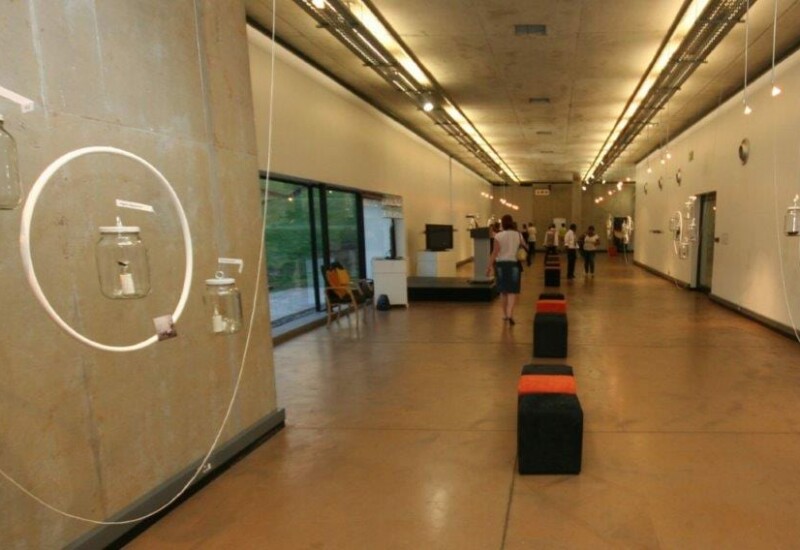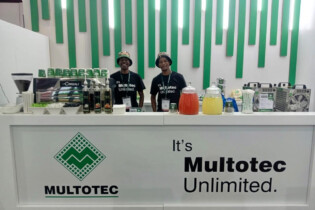Many interesting questions were raised at the Event Greening Forum’s (EGF) 2019 Conference on 11 July at Maropeng. Here are some of them, with answers and additional resources.
Q. Shouldn’t we be encouraging plant-based eating at events? Meat agriculture produces more methane than food waste and uses huge amounts of water. Plants are compostable; meat isn’t.
In a nut shell – yes. Livestock production is responsible for approximately 14.5% of all greenhouse gas emissions worldwide. Serving a plant-based menu at your event should help to lower its carbon footprint. Briefly, the reasons for this are:
- Animal agriculture requires large areas of land, which has driven rapid deforestation.
- Animal’s produce greenhouse gas emissions – their farts and burps contain methane, a potent greenhouse gas. Ruminants like cows and lamb are the worst offenders.
- Natural and synthetic fertilisers release nitrous oxide, another greenhouse gas.
- Farm waste run-off (such as manure) ends up in rivers and the sea, causing dead zones which release methane.
Additionally, animal products need large volumes of water and are a less efficient way of feeding people compared to crops. In very simple terms, one field of crops can feed many more people than if a field of crops is used to feed a cow, which is then fed to fewer people.
The above concerns don’t only apply to meat production, but also to dairy and egg production.
HOWEVER – the food we consume touches on our cultural heritage, religion, biology and preferences. Therefore it’s important to be sensitive to these factors and not simply force a specific diet on your event attendees.
Another aspect of this debate to keep in mind is that not all plant-based menus are equal. Fruit and vegetables that are grown on the other side of the world by exploited farm workers who use harmful pesticides, for example, could arguably be a more harmful alternative than serving locally and responsibly farmed meat.
For the EGF 2019 Conference we had a number of discussions about how we could create a sustainable menu that everyone would enjoy. We ended up asking the venue (Maropeng, the Cradle of Humankind) to create a plant-based menu and then adding a few meat and dairy options to it. This way we felt we could satisfy everyone while keeping our carbon footprint relatively minimal. We also confirmed that the venue sources almost all food from local farms.
Other ways to be more sustainable include swapping out foods for ‘greener’ alternatives (e.g. serving free range chicken instead of beef), or communicating with attendees about the benefits of a plant-based menu to get their agreement to have at least one vegan meal during an event. It’s important to also make an effort to reduce food waste.
Extra resources
Take this quiz to test your knowledge on which foods have a lower carbon footprint: http://eatlowcarbon.org/take-the-quiz/
Q. What can guests do to calculate and reduce their carbon footprint from travel (flights) to and from events? How do we help guests reduce this?
Event attendees can have a huge impact on the event’s carbon footprint, so it’s a great idea to educate them to make more responsible choices.
For flights, encourage your attendees to fly economy class, take the most direct route and pack light. All of these actions lower their travel-related carbon footprint.
You can also ask them to consider offsetting these unavoidable emissions, and partner with a project that they can do this through. The Southern African Tourism Services Association (SATSA) recently launched a campaign encouraging international delegates to plant spekboom when they fly to South Africa. One hectare of this hardy indigenous succulent can absorb four tons of carbon dioxide in a year, which means it outperforms the Amazon rainforest in this regard.
In terms of other forms of travel, organisers can recommend the best public transport options (and possibly arrange discounts or complimentary tickets for attendees), offer a complimentary event shuttle service, or promote lift sharing. Choosing a centrally located venue also helps to decrease the distances your attendees travel to your event.
Extra resources
Meet Green has developed an event app which helps attendees see how their choices contribute to their carbon footprint. Take a look at it for more ideas, and consider sharing it for your next event: https://myeventfootprint.com/app/
Q. Does reuse of show/expo materials allow for innovation and trend setting?
Re-using the same exhibition stand at different exhibitions is sometimes perceived as boring. Yet, when done well, it can be original and striking.
Some ideas on how to do this include:
- Request your stand be designed with modular units that can be reconfigured in various ways. This will allow you to use the same stand parts for differently sized and orientated stand spaces, and with a new look and feel at different events. (Six Lego bricks with the 2×4 design and of the same colour can be used to create more than 915 million combinations, so this approach shouldn’t stifle your creativity.)
- When you feel your stand needs an update, you could limit this to updating the graphics and branding, and keeping the original structure. If you are using fabric prints, look for ways to repurpose the old graphics – such as making cushion covers or bunting to use at future events.
- Alternatively, instead of re-using a stand, why not make your stand out of re-used objects, such as wooden pallets, books, or even plastic crates (as the Climate Smart Cape Town Pavilion did at the COP17 expo). If done carefully you could salvage the objects afterwards to re-use for their conventional purpose. Alternatively you could up-cycle waste to create building materials, furnishings or décor – much as Nicholas de Klerk from Design and Display does to great effect with many of his stand designs.
- Look to technology to help you do something unusual, such as using holograms or creating a virtual exhibition stand.
Lastly, remember that having a brand new exhibition stand for every show you attend does not automatically translate to being innovative or setting trends. Doing something different and unexpected is far more likely to get noticed.
Q. How do we make more convenient channels for people to recycle unavoidable waste? People may want to recycle but not know how, and if how they recycle is correct.
The trick to a successful recycling set-up at your event is to make it as easy as possible to use. Some tips include:
- Have bins well positioned throughout the venue, so they are easily accessible everywhere.
- Ensure you cater for all types of waste wherever there are bins. For example, if you have waste and recycling, these two bins should always be paired next to each other. If you have different bins for the different types of recycling (e.g. paper, tin, glass, plastic) or organic waste, all of these bins must always be placed next to each other. This helps to prevent the wrong waste going in the wrong bin.
- Clearly identify the type of waste that should go in a bin. Simple, bold labels close to eye-level work well, as does colour coding the bins for each type of waste being collected. You can also include image examples of the types of waste that belong in a bin.
- A suggestion put forward at our EGF 2019 Conference was to have waste ambassadors to help attendees use the bins correctly. These staff would need to be able to answer questions and help educate attendees on the different types of waste, as well as why recycling and composting are important.
- You could also include information on your event website or app on why responsible waste management is critical to the sustainability of your event, and how you are achieving this.
Extra resources
If you would like to find out more about what materials are recycled in South Africa, download Treevolution’s 2018 Recycling Guide for free here.







